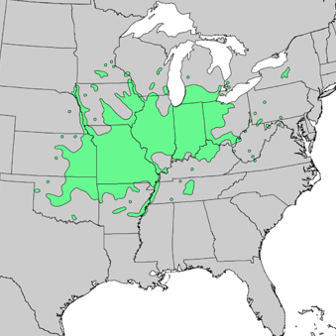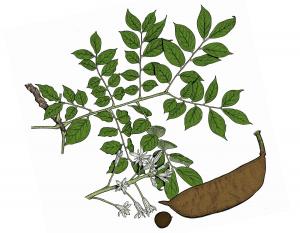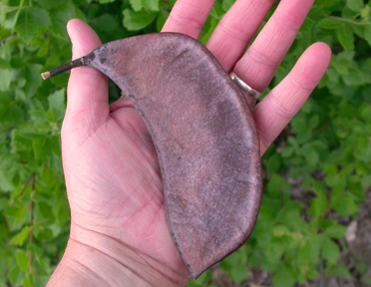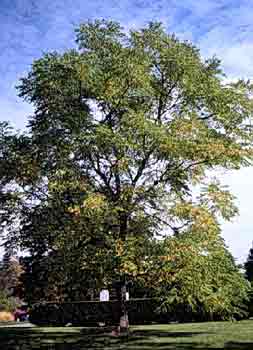The Kentucky coffee tree (Gymnocladus dioicus) is native to the central United States in States like Illinois, Indiana, Missouri, Kansas, and Kentucky with some scattered areas in Minnesota.

The Kentucky Coffee tree grows at a moderately fast growth rate and generally reaches heights of 60 to 70 feet tall. It has a shorter lifespan of only around 100 to 150 years. The bark is an ash-gray or color and is scaly and flaky with prominent narrow ridges. The younger twigs are smooth and brown with orange lenticels that function like pores for greater gas exchange. This tree loses its leaves in the fall. The leaves are alternately arranged and bipinnately compound and are in groupings that are about 1 to 3 feet long and 1 to 2 feet wide. Each stem has 7 to 14 leaflets that have a tear-drop shape.

The flowers appear in the spring months between May and June. This tree is dioecious, so male and female flowers are separate. They are a light green to white color and are about a quarter of an inch long. Male and female flowers can grow on the same tree in clusters or on separate trees. The fruit comes about via a large pod that starts out as a light green color but takes on a darker brown to purple color as it ages. They are anywhere from 4 to 10 inches long and are thick and leathery with 3 to 5 seeds on the inside. The pod will fall off and onto the ground in the winter time when it has reached full maturity.

The seed found in the pod can be eaten if cooked properly but has poisonous alkaloids when eaten raw. Native Americans used the seed for culinary and medical purposes as recreationally. According to Andrew vanNatta, researcher from the University of Wisconsin, the Omaha native American tribe used the roots of this tree medicinally to treat hemorrhaging and also kidney failure. The main draw of this tree was its beans that were used as dice in a bowl and dice game that was common a common activity among 130 different tribes. Early settlers would roast the seed and use it as a coffee substitute.

